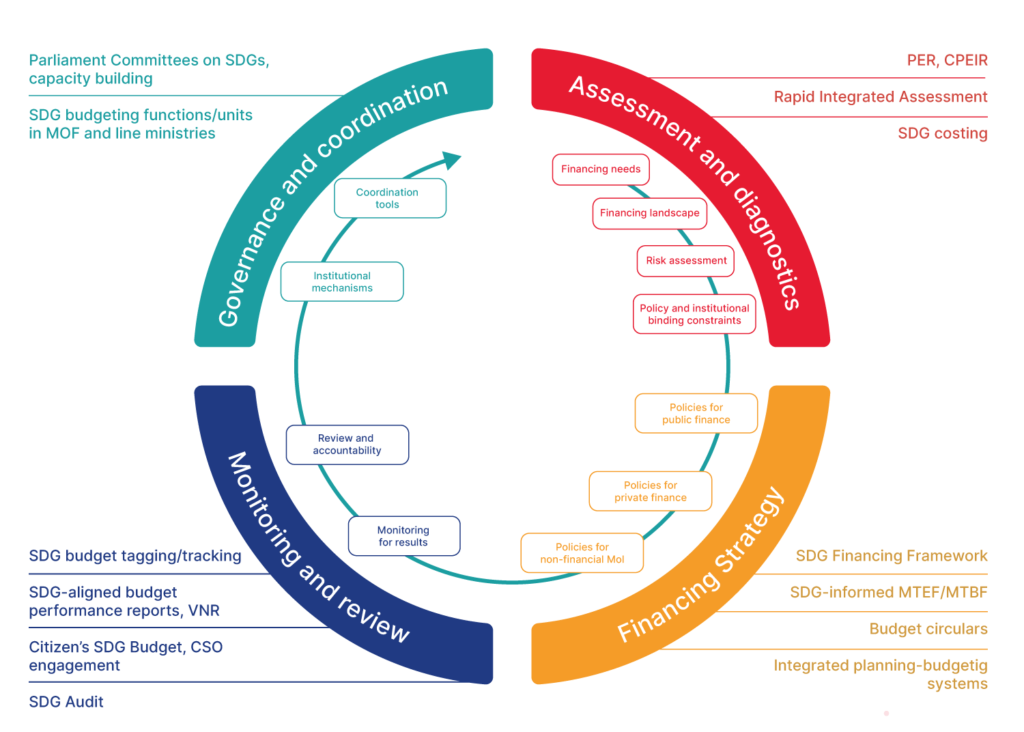The 2019 VNR in Lesotho coincided with its National Dialogue and Reform Process, an effort to bring about transformation, long-term stability, and sustainable peace against a backdrop of decades of political upheaval. The strategic positioning of the reform process in achieving SDG 16, as captured in the VNR, was such that the VNR became an important policy tool, among others, in continuing the national dialogue process. Supported by UNDP, the dialogue process led to national consensus on SDG 16-related reforms across a range of sectors. Key steps related to the VNR and longer-term SDG 16 implementation were as follows:
Political commitment and national strategy – Leading up to the VNR and building on the regional intervention of South African Development Community and the Commonwealth, UNDP, with funding from the UN Peacebuilding Fund, galvanized political and social leadership among local and international actors, as well as development partners to formulate the roadmap that guided national dialogue and reforms process.
Establishment of clear leadership, horizontal and vertical coordination mechanism – A National Dialogue Planning Committee coordinated an inclusive and participatory national consultation process. National Leaders Forums and Multi-stakeholder Dialogue Plenaries helped bring consensus on reforms and implementation options. This content became a statement of policy intent in the VNR.
Coordinated thought leadership and policy articulation – A UN/Development Partners Technical Advisory Group was established to coordinate thought leadership and technical support by experts. This entailed distilling views from consultative dialogues into reform content and implementation options, which were presented to the Leaders Forums and Multi-stakeholder Plenaries. Content became the policy proposal for SDG 16 embedded in the VNR.
The National Reforms Authority (created through the NRA Act) – This provides a legal and institutional framework for implementation of the agreed reforms that significantly contributes to attainment of SDG 16. The NRA Act guards against interference and provides a long-term track for accelerating progress towards SDG 16 by ensuring successful implementation of SDG 16-related reforms.
The National dialogue highlighted the value of linking the VNR to local realities and national development planning processes. These included: a legislative framework and legal mandate for reform implementation (NRA Act 2019); institutions to oversee implementation; allocation of resources and financing through the budget (Appropriation Bill 2019); and a programme of support for coordinated reform implementation across development partners.
Take-aways and Going Forward: For the VNR to be an effective advocacy tool, there must be national consensus on key development issues and underlying challenges, with a well-defined roadmap to address those issues. To this end, VNR recommendations must be linked to national development strategies and policy priorities for adequate follow-up.
In addition, horizontal, vertical, and technical coordination is critical to inclusion, policy coherence and the formulation of policy proposals that become part of a VNR. In terms of data, national repositories of statistics should be supported to generate, process, and manage SDG 16-specific data, including through related surveys, with academic and research institutions also engaged in national VNR monitoring and evaluation frameworks.
*Case Study draws from insight and input provided by UNDP Lesotho in 2019.

